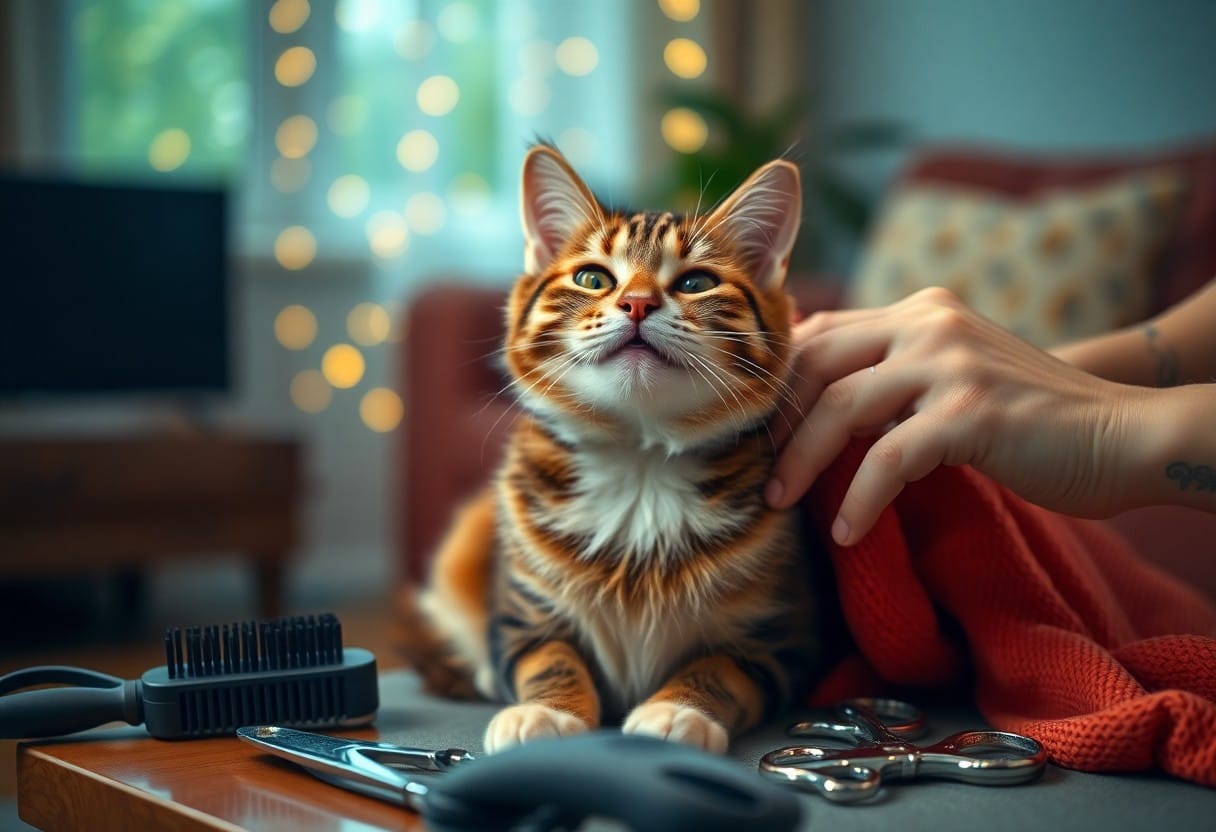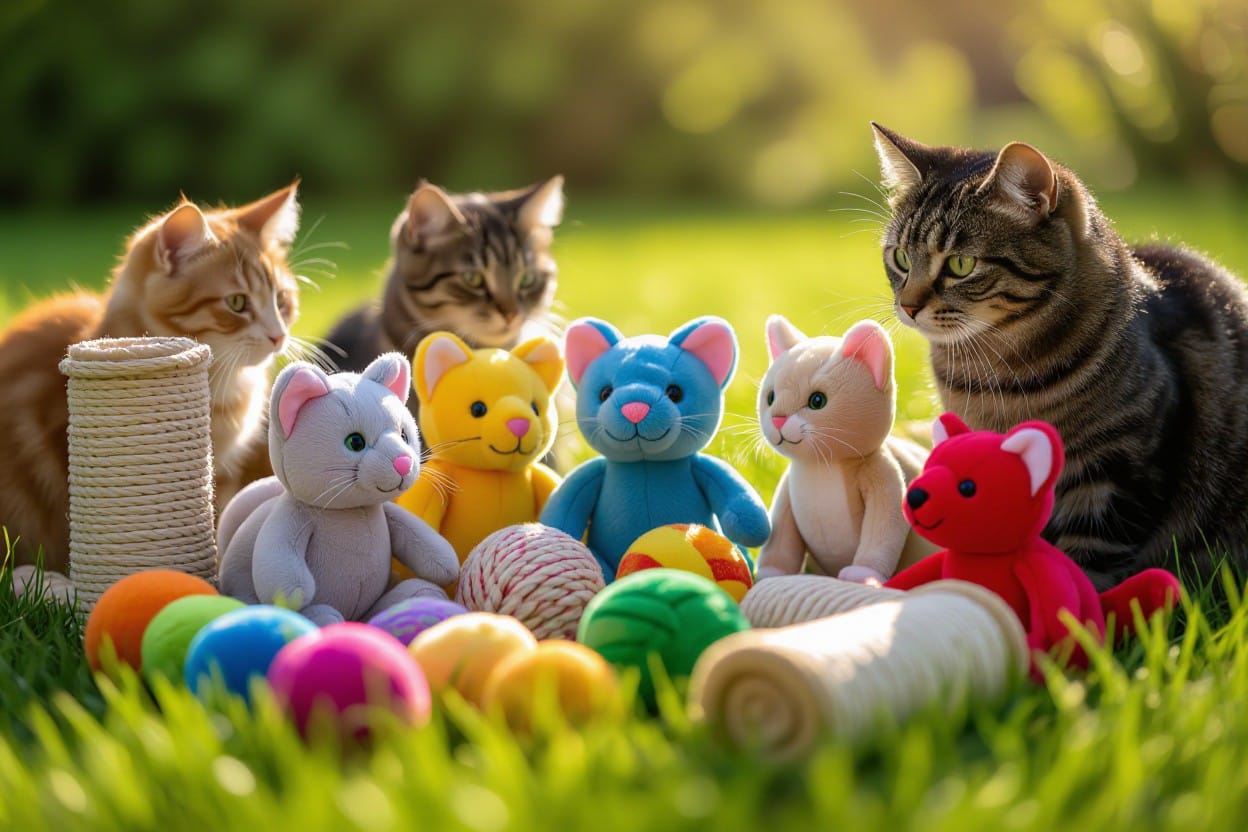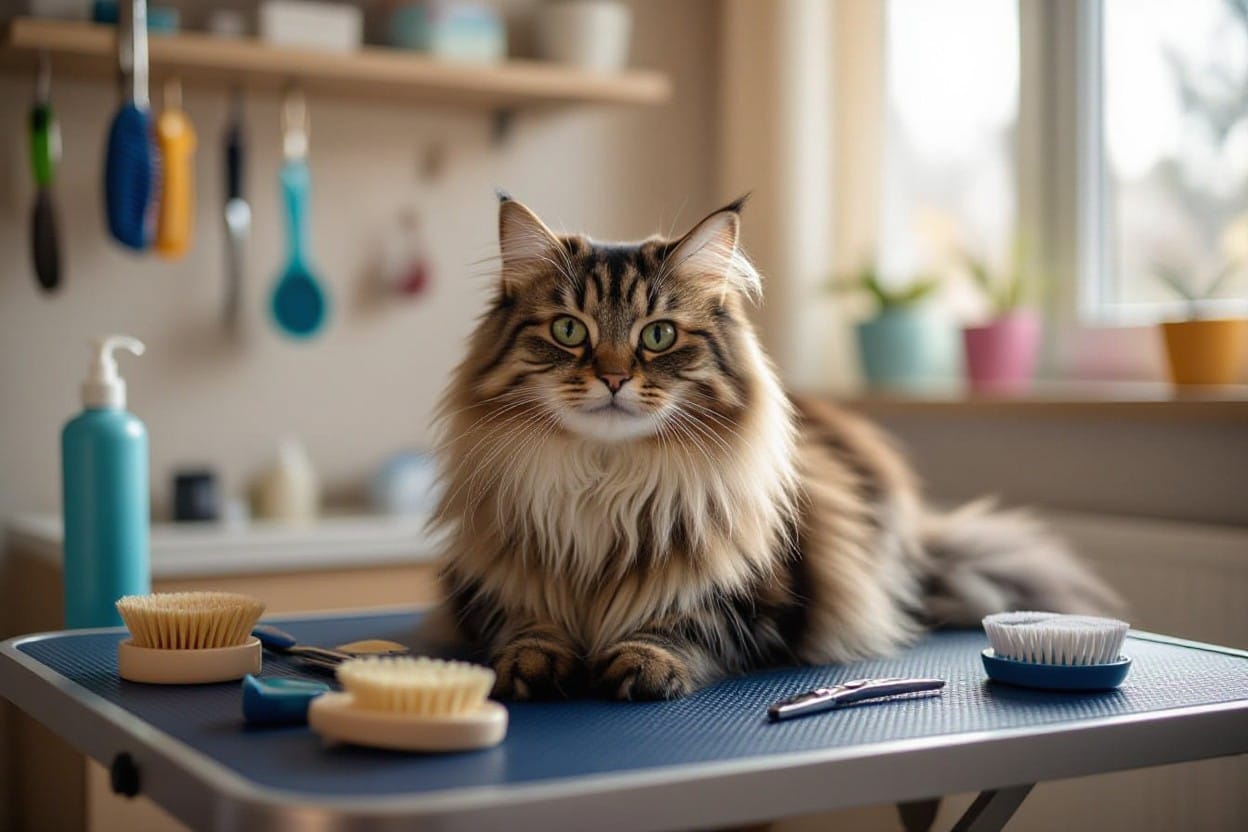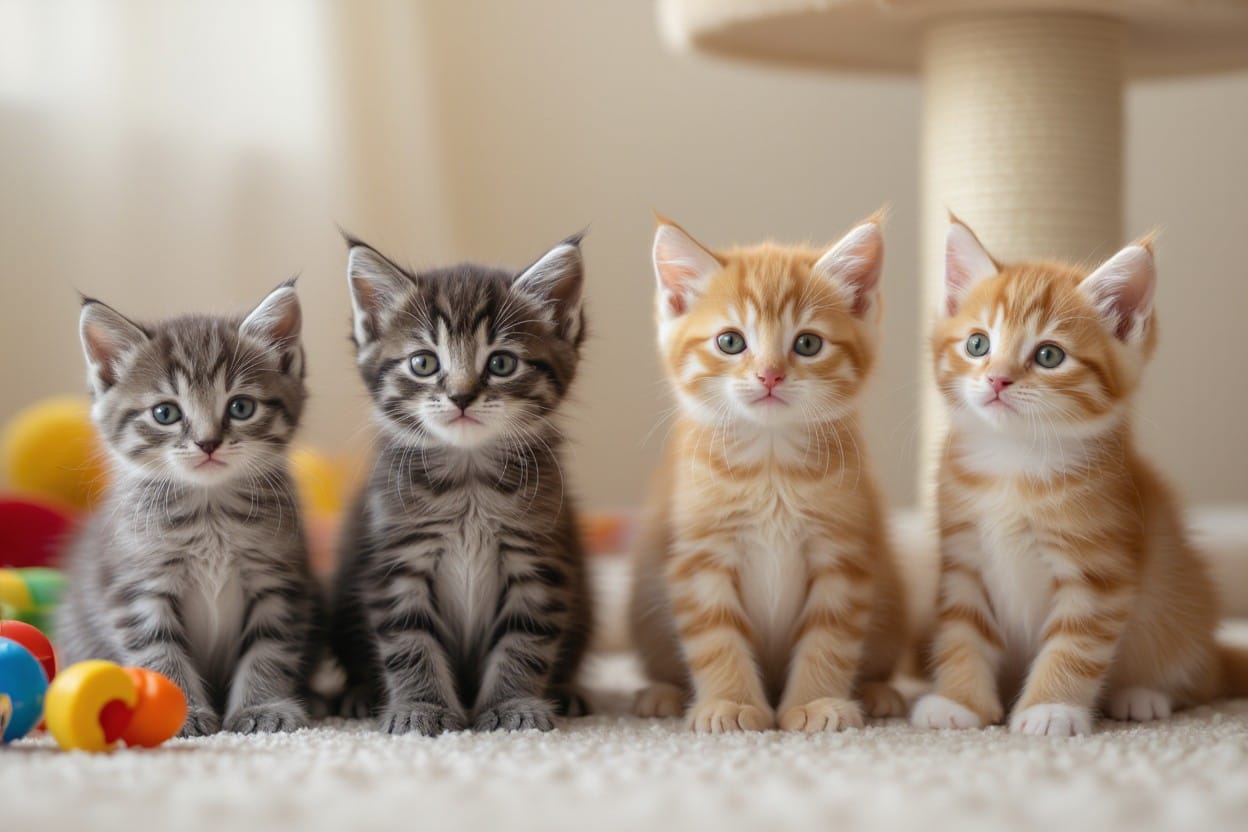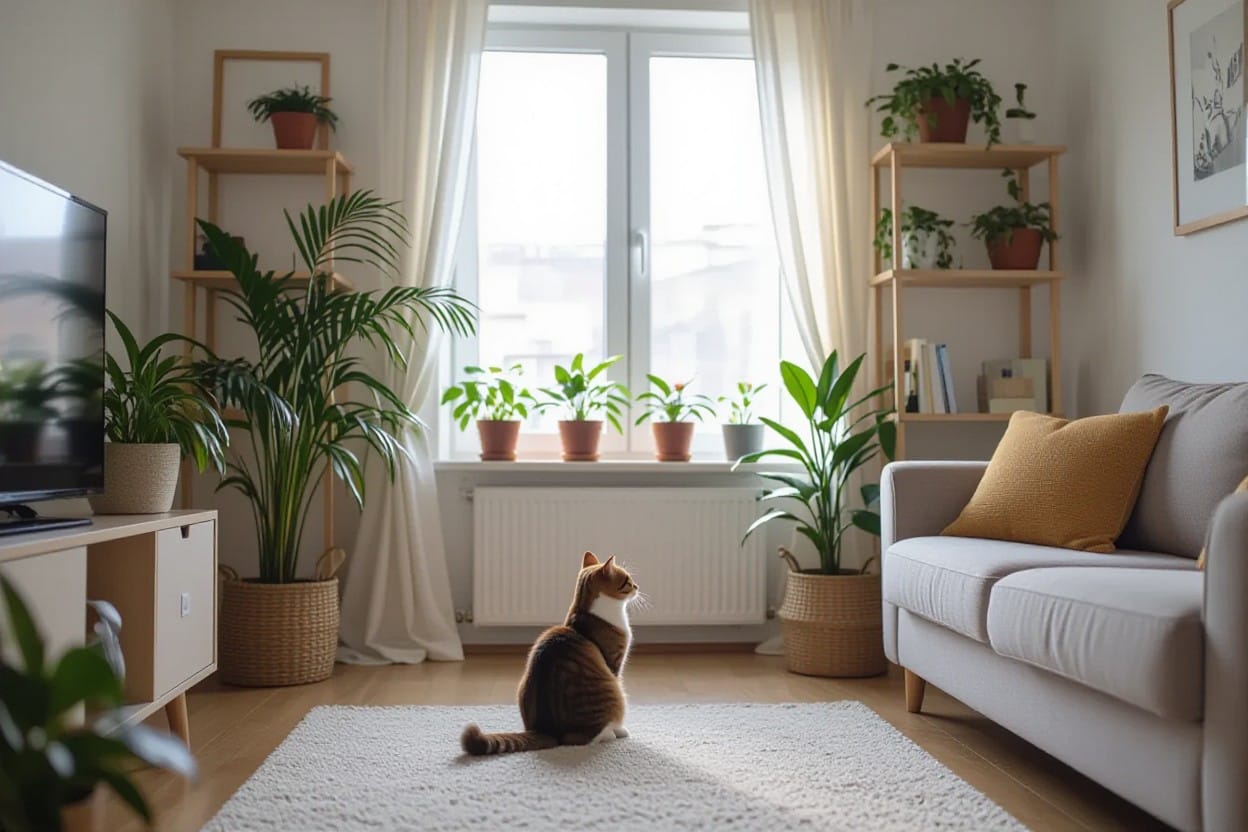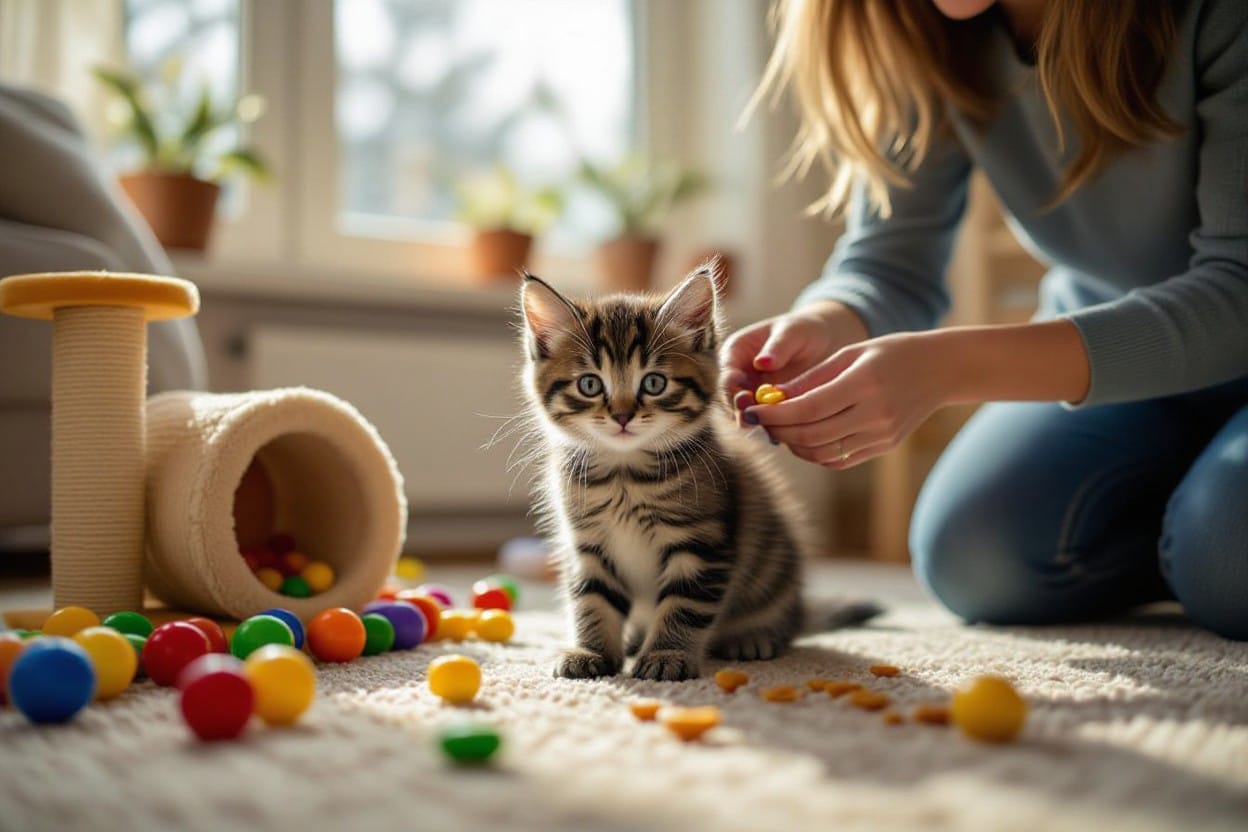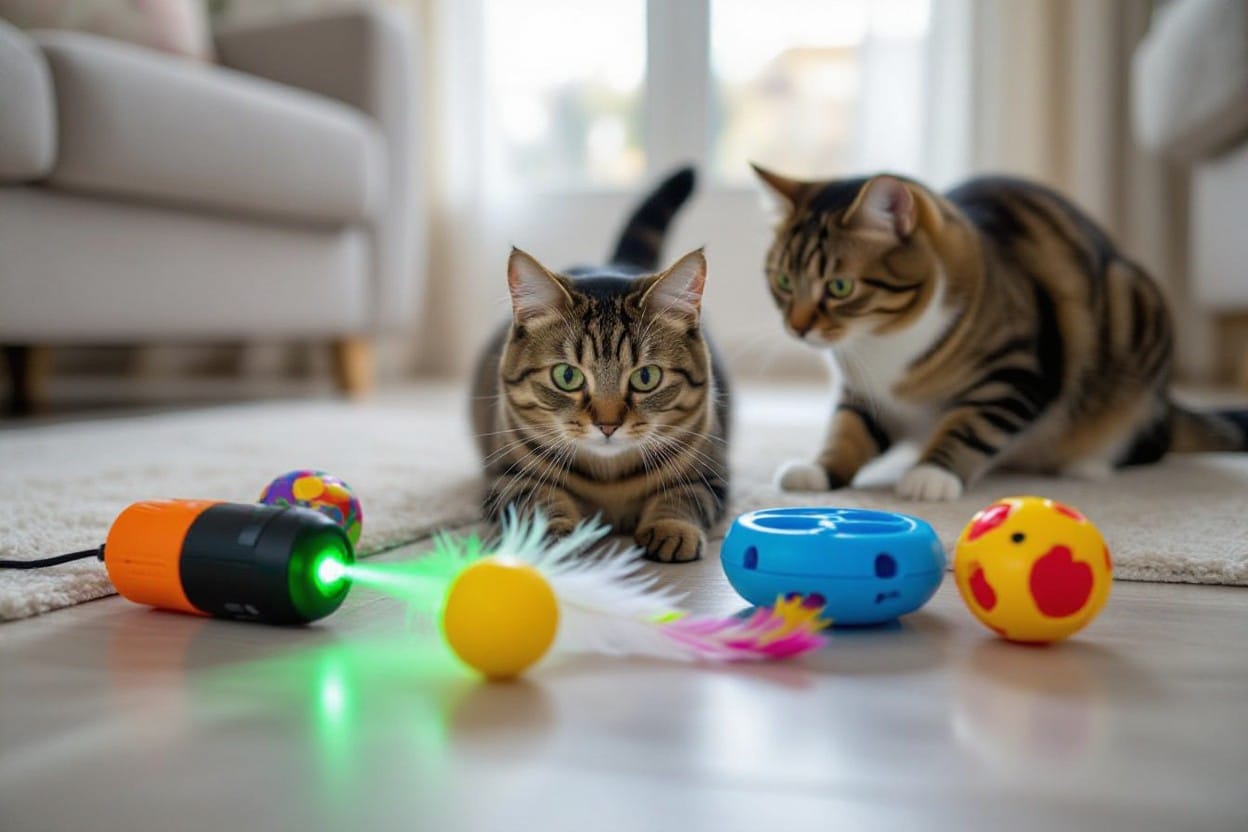Cats thrive on regular grooming to maintain their physical appearance and emotional well-being. By learning effective at-home grooming techniques, you can help reduce shedding, prevent matting, and spot skin issues early. In this guide, you will discover the important tools and methods to provide your feline friend with stress-free grooming sessions, ensuring they feel comfortable and cared for. Not only does proper grooming elevate their happiness, but it also strengthens the bond between you and your beloved pet.
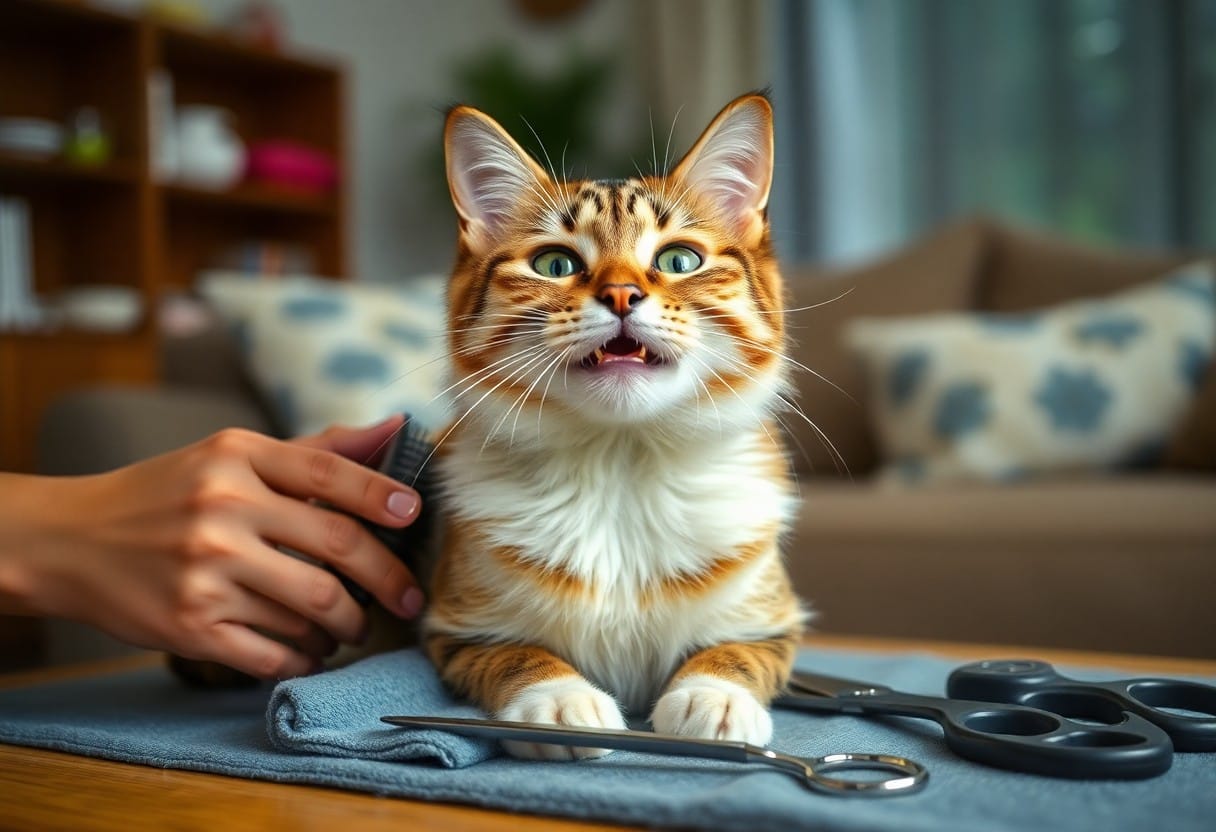
Key Takeaways:
- Regular grooming sessions not only keep your cat’s coat healthy and free of tangles but also strengthen the bond between you and your pet.
- Establish a calming grooming routine that includes brushing, bath time when necessary, and nail clipping to ensure a stress-free experience for your cat.
- Use appropriate tools and techniques tailored to your cat’s breed and coat type, which can enhance their comfort and enjoyment during grooming.
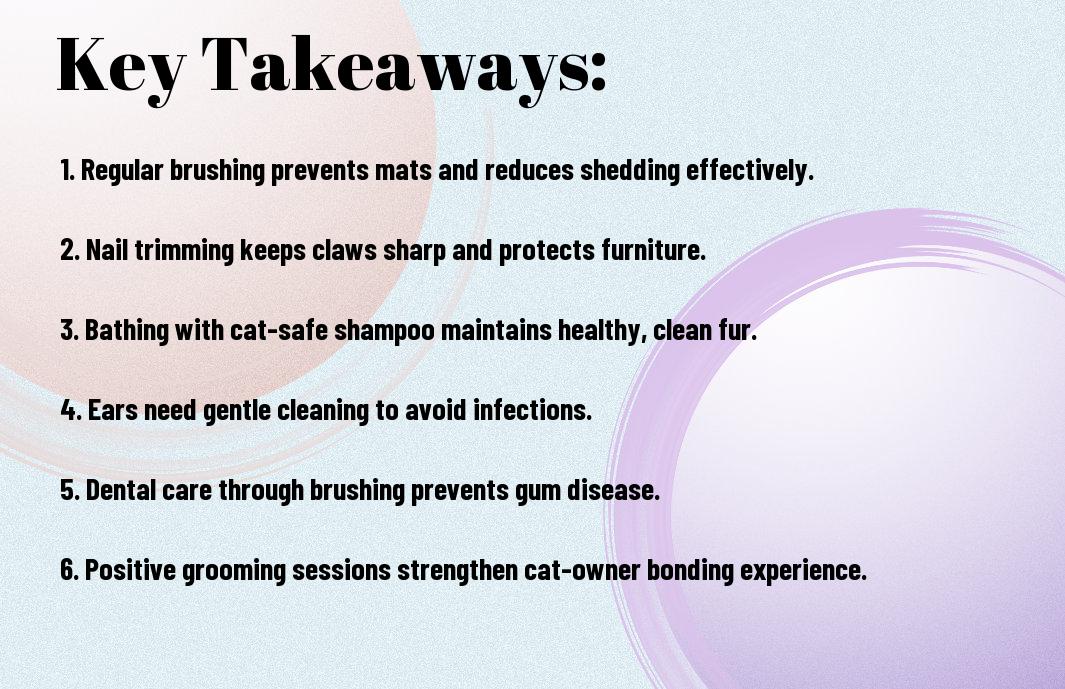
Understanding Your Cat’s Grooming Needs
Your understanding of your cat’s grooming needs is vital for their well-being. Cats have varying grooming requirements based on factors such as their breed, coat length, and age. Recognizing the signs that your cat needs grooming, along with their natural grooming habits, will help you provide the best care. Being attentive to your feline companion will keep them comfortable, healthy, and looking their best.
Importance of Regular Grooming
Against common belief, regular grooming is not solely for aesthetic purposes; it plays a vital role in your cat’s overall health. Regular grooming minimizes shedding and the risk of hairballs, while also allowing you to monitor your cat’s skin condition and detect any signs of parasites or issues early on. Establishing a grooming routine helps strengthen the bond between you and your cat, making the experience enjoyable for both.
Breed-Specific Requirements
One vital aspect of grooming is understanding the breed-specific requirements that cater to your cat’s unique coat and characteristics.
Due to the wide variety of cat breeds, grooming needs can greatly differ. For instance, long-haired breeds such as Persians require more frequent brushing to prevent matting and tangles, while short-haired breeds like British Shorthairs may only need occasional grooming. Additionally, some breeds may have unique characteristics that necessitate specific grooming tools or techniques. Understanding these breed-specific grooming requirements will not only ensure your cat’s health but also their comfort and happiness, ultimately enhancing the quality of your time together.
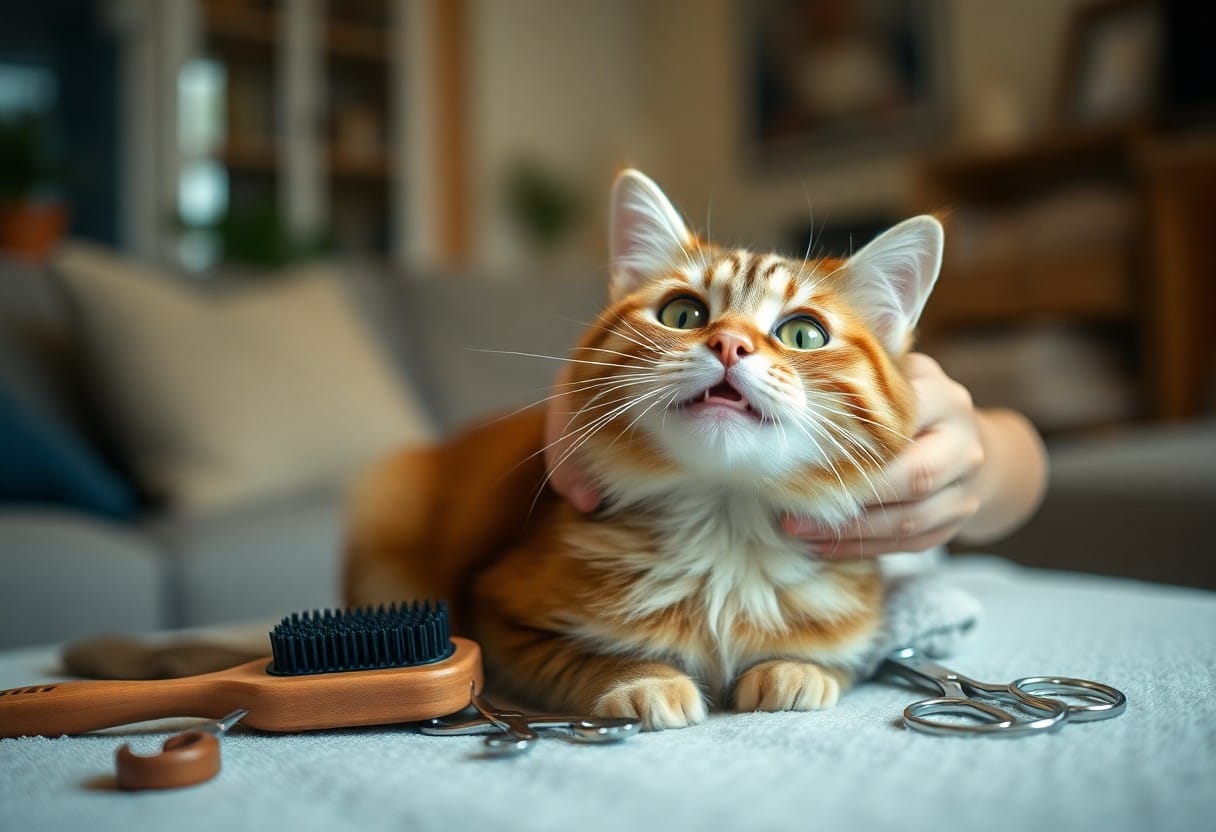
Essential Grooming Tools
Some grooming tools are indispensable for maintaining your cat’s health and happiness. Having the right equipment ensures a smooth grooming experience for both you and your feline friend. Invest in quality brushes, combs, nail clippers, and grooming gloves to keep your cat looking its best and minimize shedding and matting.
Brushes and Combs
Against the backdrop of your cat’s unique coat, selecting the right brush or comb is vital for effective grooming. Different hair types require specific tools, so familiarize yourself with options like slicker brushes, bristle brushes, and wide-toothed combs. Regular brushing not only reduces shedding but also promotes a healthy coat and strengthens your bond with your pet.
Nail Clippers and Grooming Gloves
One of the crucial grooming tools you should invest in is quality nail clippers and grooming gloves. Keeping your cat’s nails trimmed helps prevent painful snags and scratches on both you and your furniture. Grooming gloves are excellent for deshedding while providing a comforting massage, reinforcing your connection with your cat.
Another important consideration is choosing nail clippers that offer a safe and precise cut, like those with safety guards, to reduce the risk of cutting too close to the quick. Always keep your cat calm during nail trimming by using positive reinforcement, such as treats or praise. Additionally, grooming gloves serve a dual purpose; not only do they help remove excess fur, but they also offer a soothing experience that can promote relaxation and trust between you and your pet. Prioritizing these tools in your grooming routine can significantly enhance both your cat’s comfort and well-being.
Bathing Your Cat
Not every cat enjoys bath time, but occasional bathing can be beneficial for their coat and skin health. By introducing your cat to the bathing process gently and gradually, you can help them become more comfortable. It’s important to use this time as an opportunity to bond, ensuring that your feline friend associates bathing with a positive experience.
When and How to Bathe
Your cat generally requires a bath only when they are particularly dirty, have an unpleasant odor, or if they suffer from certain medical conditions. When you decide it’s bath time, use lukewarm water, and hold your cat gently to minimize stress. You can begin by wetting their body gradually and using a cat-friendly shampoo for the best results.
Best Products for Cat Bathing
Above all, choosing the right products can make a significant difference in your cat’s bathing experience. Look for gentle, hypoallergenic shampoos specifically formulated for cats to avoid skin irritation. Additionally, tools like soft washcloths and non-slip bath mats can help keep your cat secure and comfortable during the process.
Bathe your cat using the best products available, like high-quality feline shampoos. These are designed to clean effectively without causing irritation. Avoid using human shampoos, as they can be harsh on a cat’s delicate skin. You’ll also want to consider a soft-bristled brush for pre-bathing grooming to remove tangles and debris. Having a towel nearby for quick drying and ensuring the water temperature is just right can also enhance your cat’s experience. These steps create a safe and comfortable environment for your furry friend.
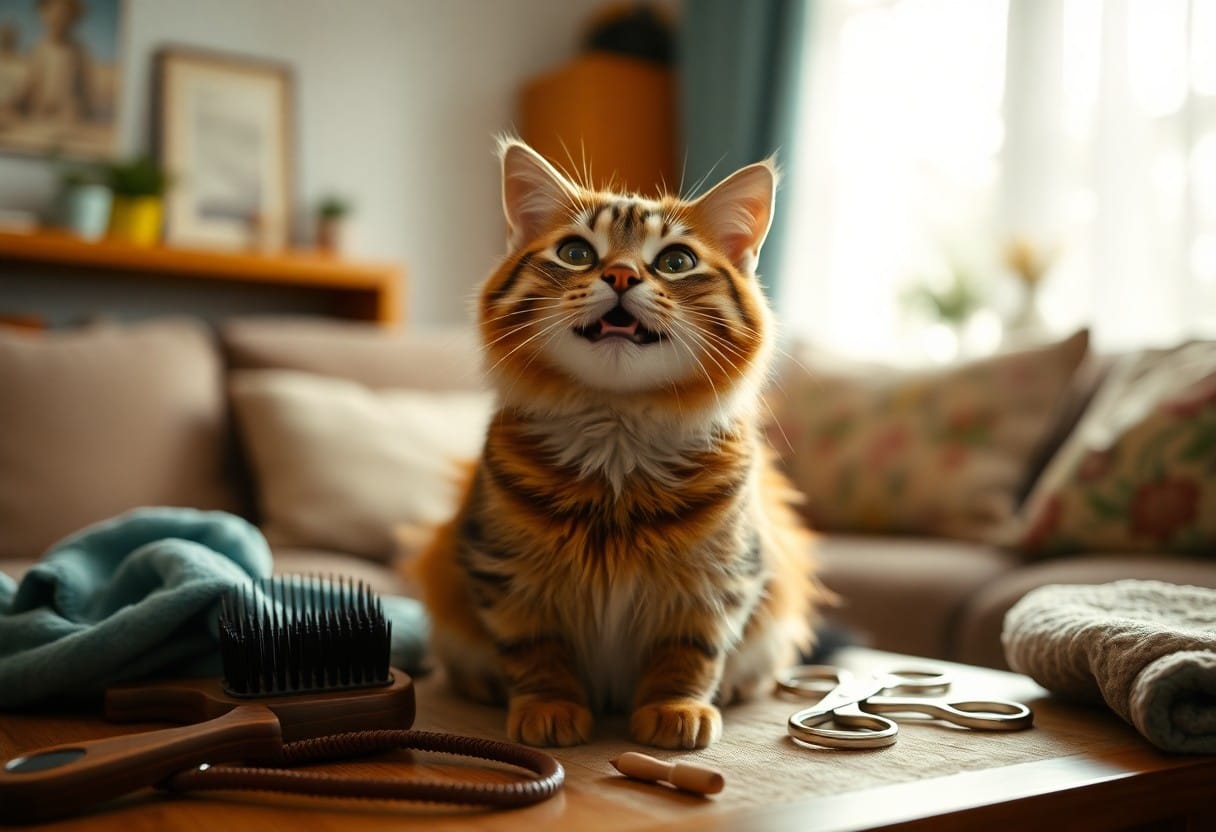
Managing Shedding and Fur Care
Once again, managing your cat’s shedding and fur care is imperative for a happy and healthy pet. Regular grooming not only reduces loose fur around your home but also promotes skin health and strengthens the bond between you and your feline friend. By implementing effective techniques and addressing mats and tangles promptly, you can maintain a clean environment and ensure your cat feels comfortable and cared for.
Techniques to Reduce Shedding
Among the most effective methods to minimize shedding is regular brushing. Utilizing the right type of brush for your cat’s coat length and texture, as well as establishing a consistent grooming routine, will help to keep loose hairs at bay. Additionally, providing a balanced diet rich in Omega fatty acids can improve coat health, reducing excess shedding.
Dealing with Mats and Tangles
About your cat’s fur, mats and tangles can lead to serious discomfort if left untreated. Ensuring you have a proper grooming kit and using detangling sprays specifically designed for cats can help ease the process. Regularly checking your cat’s coat for tangles is key, especially in areas where fur may easily knot, like under the arms and behind the ears.
Dealing with mats and tangles promptly is vital for your cat’s comfort. If you encounter a mat, work slowly with a wide-tooth comb to gently detangle, starting from the edges and progressing inward. If mats are severe, consider using a dematting tool, but be cautious to avoid hurting your cat’s skin. In cases of extensive matting, seeking professional grooming assistance may be the safest option, as severe mats can cause skin irritation or even injury if pulled too hard. Keeping your grooming sessions positive and utilizing treats can help reduce anxiety during the process.
Ear and Dental Care
To ensure your cat stays healthy and happy, regular ear and dental care is a must. Neglecting these areas can lead to discomfort and various health issues. By incorporating simple routines into your grooming practices, you’ll be helping your feline friend maintain their well-being and preventing potential problems.
Cleaning Your Cat’s Ears
Across your cat’s life, ear care can often be overlooked, yet it is vital for their comfort. Regularly check your cat’s ears for dirt, wax buildup, or signs of infection such as redness or odor. Using a veterinarian-recommended ear cleaner, gently wipe the inside of the ear, being careful not to go too deep. This simple process can help prevent ear infections and keep your cat feeling fresh.
Maintaining Oral Hygiene
Ears are not the only area where regular checks are necessary; dental hygiene is equally important. You can help maintain your cat’s oral health by brushing their teeth regularly. Choose a feline-specific toothpaste and a soft-bristled toothbrush. Poor dental hygiene can lead to gum disease and tooth loss, which can severely impact your cat’s overall health. To keep things positive, regularly offering dental treats can also assist in keeping their teeth clean while providing a tasty reward. Regular veterinarian check-ups are crucial to monitor their dental health.
Consequently, prioritizing your cat’s oral hygiene can have significant benefits. If left untreated, dental problems can lead to painful abscesses and infections, affecting your cat’s quality of life. Regular brushing not only helps to minimize tartar buildup but also fosters a closer bond between you and your pet. Furthermore, a healthy mouth can prevent bacteria from entering their bloodstream, which can lead to serious health issues including heart and kidney disease. Taking these simple steps will ensure your cat remains healthy and merry.
Creating a Positive Grooming Experience
Many pet owners underestimate the importance of a positive grooming experience for their cat. By establishing a calm and inviting atmosphere, you invite your feline friend to view grooming as an enjoyable part of their routine. Taking the time to create a stress-free environment will help foster positive associations and make grooming more manageable for both you and your cat.
Building Trust and Comfort
An necessary part of grooming is building trust with your cat. Start by choosing a comfortable, quiet space where your cat feels safe, and gradually introduce grooming tools. Use gentle voice tones and allow your cat to explore the tools at their own pace. Positive reinforcement with treats or petting can help reinforce this trust, making future grooming sessions easier and more enjoyable.
Tips for Stress-Free Grooming
Any effective grooming session should prioritize your cat’s comfort. Follow these tips to enhance the experience:
- Choose the right grooming tools that suit your cat’s coat type.
- Set a consistent schedule for grooming to create routine.
- Keep grooming sessions short and break them into manageable parts.
Thou will find that these strategies can transform grooming into a pleasant activity for both you and your feline companion.
But to ensure your cat enjoys grooming, consider these additional insights:
- Use brushes designed for your cat’s fur length and texture.
- Groom after playtime when your pet is more relaxed.
- Maintain a gentle touch, as rough handling can lead to anxiety.
Thou will truly notice a marked improvement in your cat’s response to grooming when you incorporate these tips into your routine.
To wrap up
Hence, by adopting a comprehensive approach to at-home grooming, you can significantly enhance your cat’s happiness and well-being. Regular grooming not only helps in keeping your cat’s coat healthy and free of mats but also fosters a stronger bond between you and your feline companion. By incorporating brushing, bathing, and nail trimming into your routine, along with creating a calm environment, you ensure your cat remains content and stress-free. With these practices, you are empowered to provide the best care for your furry friend.
FAQ
Q: How often should I groom my cat at home?
A: The frequency of grooming your cat depends on its breed and coat type. Long-haired cats typically require grooming every 2 to 3 days to prevent matting and tangles, while short-haired cats can usually be groomed once a week. Regular grooming not only helps maintain a clean coat but also allows you to check for any skin issues or parasites. It’s important to observe your cat’s behavior during grooming sessions, and adjust the frequency based on their comfort and coat condition.
Q: What tools do I need for effective at-home grooming?
A: To effectively groom your cat at home, you will need a few necessary tools. A slicker brush is great for removing tangles and loose fur, while a comb can help with more delicate areas around the face and ears. Nail clippers or a nail grinder are also necessary for keeping your cat’s nails trimmed. Additionally, consider using a cat-specific shampoo for occasional baths, along with grooming wipes for a quick clean-up between sessions. Having these tools on hand can make grooming more efficient and enjoyable for both you and your pet.
Q: How can I make grooming a positive experience for my cat?
A: To create a positive grooming experience for your cat, start by introducing the grooming tools gradually. Allow your cat to sniff and explore the tools before using them. Choose a comfortable and quiet space, and begin with short grooming sessions to avoid overwhelming your cat. Always offer treats and praise during and after grooming to reinforce good behavior. Pay attention to their body language; if your cat shows signs of stress, take a break and try again later. Over time, your cat will associate grooming with positive outcomes, making the process easier for both of you.
